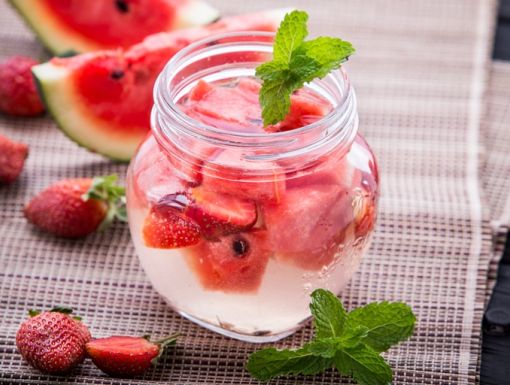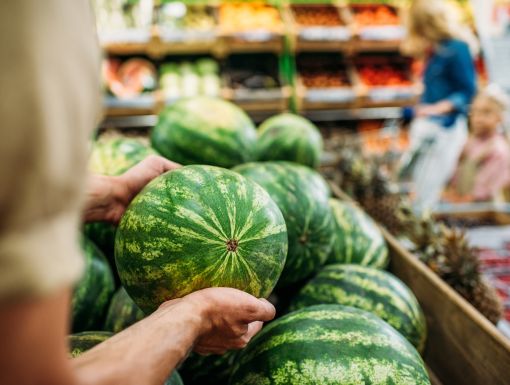
7 Reasons to Eat More Watermelon
There’s a reason why summer is the season for watermelon. Not only does this favorite fruit reach its peak flavors during the warmer months, watermelon is also even more nutrient-rich this time of year. From being a great source of raw lycopene to its hydrating nature, here are seven reasons to eat more watermelon. (Lycopene is the pigment that gives red and pink fruits, such as tomatoes, watermelons and pink grapefruit, their characteristic color. Lycopene has been linked to health benefits ranging from heart health to protection against sunburns and certain types of cancers.)
It’s hydrating. No surprise here. (It is called watermelon, after all!) But you may find it interesting that watermelon is 92% water, so by enjoying it, you really are eating your way toward better hydration.
It’s a top source of lycopene. Tomatoes get the glory when it comes to lycopene, but watermelon actually has more – about 40 percent more, on average. Our bodies also absorb lycopene from watermelon more easily. Unlike tomatoes, which need to be cooked in order to maximize lycopene absorption, we can effectively absorb and reap the benefits of lycopene from raw watermelon.
It may improve blood pressure. Watermelon is one of the top food sources of citrulline, an amino acid that can be converted into arginine, which can help to improve blood flow, blood pressure and overall cardiovascular health when consumed as a part of a healthy, balanced diet.
CTA: Want food and fitness tips and recipes delivered to your inbox? Sign up for our weekly newsletter.
It’s not as sugary as you may think. Because it’s so sweet, watermelon has a reputation for being high in sugar. The fact is that nearly all fruits are naturally high in sugar, but they’re also rich in nutrients. Here are the stats: One cup of cubed watermelon has just 45 calories, 11 grams of carbs and 9 grams of (naturally occurring) sugar. A cup of cubed sweet potatoes, by comparison, has 175 calories, 41 grams of carbs and 16 grams of sugar, nearly four times more carbs and twice the sugar of watermelon.
It’s packed with vitamins and nutrients, which increase in concentration as the watermelon gets riper. All of the goodness of watermelon – the lycopene, beta carotene, vitamin C, vitamin A, fiber and overall antioxidant content – gets better with age. The redder the flesh of the watermelon, the higher the concentration of nutrients, whereas the lighter or whiter the flesh, the fewer the nutrients.
You can eat the rinds! Most of us eat the juicy red part of watermelon and leave the rinds behind. But the rinds are entirely edible (just remove the outer peel), and are as rich in flavonoids, lycopene and vitamin C as the flesh itself. Watermelon rinds can be sliced and added to your favorite stir-fry recipe, juiced or pureed for chilled soups.
It can beprepared in countless creative ways. Simply slice it and eat it plain, or with a sprinkle of salt. Or go with the classic pairing of watermelon: fresh mint and feta (or goat cheese, for a lower-sodium option). Make watermelon salsa, using watermelon in place of some (or all) of the tomatoes in your favorite salsa recipe. Grill it. Juice it. Puree it, rind and all, for soups and mocktails. The options are endless!
Editor’s note: A version of this article originally appeared on WGNO’s “Get the Skinny” segment.



